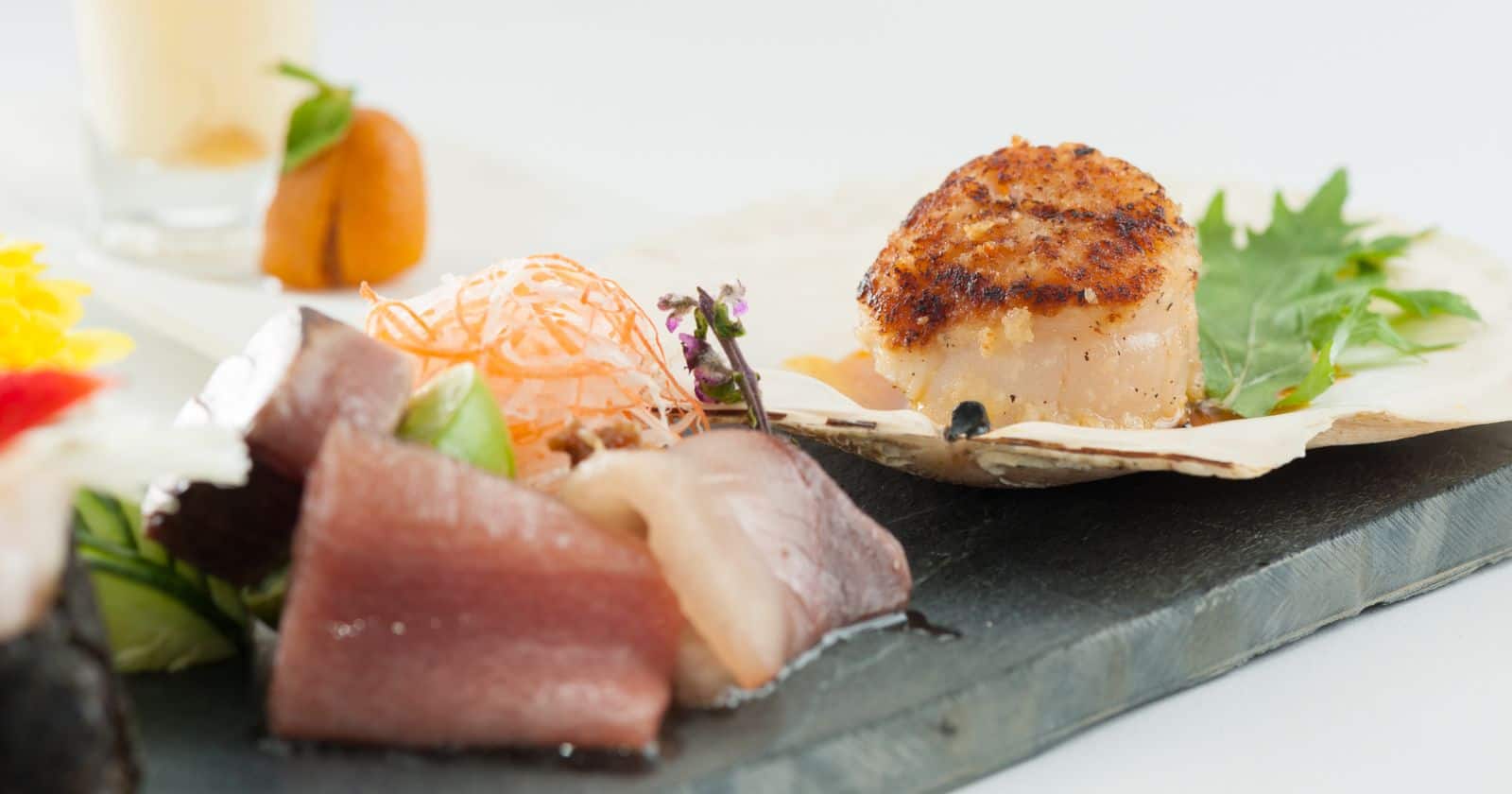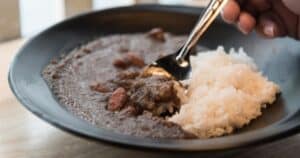Japanese fusion food is a captivating blend of traditional Japanese dishes and international culinary influences. From the fusion of Western favorites like steak, hamburger, and omelets with Japanese ingredients, to the elegant French-Japanese fusion cuisine, this innovative approach creates flavor combinations and taste sensations that are truly unique.
By infusing Japanese techniques and ingredients into these dishes, Japanese fusion food not only adds a twist to familiar recipes but also opens up a world of exciting and unexpected flavors.
By the end of this journey, you’ll have a deeper understanding of Japanese fusion food, its cultural significance, and be inspired to try out some exciting new dishes that blend the best of Japanese and international cuisine. So get ready to embark on a gastronomic adventure filled with bold flavors and unforgettable culinary experiences. Stay tuned!
The Definition of Japanese Fusion Food
Japanese fusion food is a type of cuisine that combines Japanese ingredients and cooking techniques with elements of other foreign cuisines. It is a unique and innovative culinary style that has gained popularity in recent years. Japanese fusion dishes showcase the versatility of Japanese cuisine and offer a modern twist on traditional flavors.
Here are some examples of Japanese fusion dishes:
- Omurice: This dish combines the Western-style omelet with Japanese rice. It is often stuffed with chicken or beef and topped with ketchup. Omurice is a popular comfort food that blends the best of both worlds.
- Yakisoba: A stir-fried noodle dish that originated in China but has been adapted by the Japanese. It typically includes pork or seafood, but chicken or beef can be used as a halal alternative. Yakisoba is known for its savory and tangy flavors.
- Ramen burger: This fusion creation replaces the traditional burger bun with ramen noodles. Filled with beef or chicken, the ramen burger merges the beloved American burger with Japanese flavors.
Japanese fusion food combines traditional Japanese ingredients and cooking techniques with elements from other cuisines to create unique and flavorful dishes. It offers a modern and innovative way to experience Japanese cuisine, appealing to those seeking a fusion of different culinary traditions.
History and Origins of Japanese Fusion Cuisine
Japanese fusion cuisine is a unique and innovative style of cooking that combines Japanese ingredients and cooking techniques with elements from other foreign cuisines. Its origins can be traced back to the early 20th century when Japan started embracing Western culture, including its cuisine.
The introduction of Western ingredients and cooking methods paved the way for the creation of fusion dishes such as curry rice, pork cutlet, and croquette.
The concept of Japanese fusion cuisine revolves around the idea of blending the best parts of different culinary traditions. This fusion approach allows Japan to adopt the ingredients or cooking techniques from other countries and incorporate them into their own cuisine, resulting in hybrid-like dishes that showcase the diversity of flavors. In fact, some Japanese fusion dishes are so quintessentially Japanese that one might not realize their foreign origins.
Over the years, Japanese fusion cuisine has gained tremendous popularity and has even been recognized as a national cuisine in itself. It combines the classic dishes typically found in Western countries, such as steak, hamburger, and omelets, using only Japanese ingredients.
This fusion technique not only adds a Japanese twist to the original dish but also results in a unique and innovative cuisine that is widely enjoyed.
Key Influences on Japanese Fusion Food
- Chinese Cuisine: The biggest influence on Japanese fusion cuisine is Chinese cuisine. The Chinese played a significant role in Japan’s history, and their cuisine has had a lasting impact on Japanese cuisine, including fusion dishes. Chinese cooking techniques and ingredients, such as soy sauce, noodles, and dumplings, have been incorporated into Japanese fusion dishes.
- Western Cuisine: The introduction of Western culture and cuisine to Japan in the early 20th century has greatly influenced Japanese fusion food. Western ingredients and cooking methods have been adopted and fused with traditional Japanese ingredients and techniques. Dishes like curry rice, pork cutlet, and croquette are examples of fusion dishes that combine Japanese flavors with Western influences.
- Italian and Latin Cuisine: Japanese fusion cuisine has also been influenced by Italian and Latin cuisines. Italian ingredients like pasta and pizza have been adapted to Japanese flavors, resulting in dishes like ramen pizza. Latin American ingredients, such as avocado and cilantro, have been incorporated into sushi rolls, creating unique flavors and combinations.
Signature Ingredients and Techniques in Japanese Fusion
Japanese fusion cuisine combines traditional Japanese ingredients and cooking techniques with elements from other foreign cuisines, resulting in unique and innovative dishes.
Some signature ingredients in Japanese fusion cuisine include soy sauce, rice, Western ingredients like cheese and pasta, and Japanese ingredients like miso paste and nori seaweed. These ingredients are used to add flavor and create fusion dishes such as sushi burritos, omurice, and yakisoba.
In addition to these ingredients, Japanese fusion cuisine also incorporates fusion techniques. These techniques involve combining Japanese and Western ingredients, using Japanese ingredients in non-traditional ways, and incorporating Japanese cooking techniques into non-Japanese dishes. This fusion of ingredients and techniques allows for the creation of dishes that are both familiar and new.
One popular Japanese fusion dish is yakisoba, a stir-fried noodle dish that can be made with pork or seafood. Another dish is omurice, which combines omelet and rice and is often filled with chicken or beef and topped with ketchup. Sushi burritos are also a popular fusion dish, with the ingredients of sushi wrapped in a burrito.
Furthermore, Japanese fusion cuisine includes dishes like ramen, which is a Japanese-Chinese fusion dish that originated in China but has been adapted to Japanese tastes. Matcha powder, a type of green tea powder commonly used in Japanese cuisine, is sometimes used in Japanese fusion desserts and drinks.
Popular Japanese Fusion Dishes and Restaurants
Japanese fusion cuisine has gained immense popularity in recent years, combining Japanese ingredients and cooking techniques with elements of foreign cuisines. Some popular Japanese fusion dishes include Omurice, Japanese pasta, Japanese pizza, Taco rice, and more. These unique combinations offer a tantalizing blend of flavors that appeals to food enthusiasts around the world.
One renowned restaurant to experience this culinary fusion is JJ Kitchen in Tokyo. They specialize in Japanese fusion cuisine and serve dishes like udon with basil cream sauce and frugal cheese fondue using mochi.
Another notable establishment is Gonpachi, also located in Tokyo, famous for its Japanese fusion cuisine and featured in the movie Kill Bill. Kojyu, a Michelin-starred restaurant, offers traditional Japanese fusion dishes using authentic ingredients, while Nobu in Tokyo is known for their Japanese fusion cuisine with locations worldwide.
Japanese fusion cuisine is a fascinating blend of traditional Japanese flavors and cooking techniques with innovative twists inspired by other cuisines. It has even been recognized as a national cuisine in itself, reflecting its rising popularity.
The combination of delicious dishes and restaurants dedicated to this fusion makes it a culinary adventure worth exploring for food enthusiasts.
Critiques and Controversies surrounding Japanese Fusion Cuisine
Japanese fusion cuisine has gained popularity in recent years, but it is not without its critiques and controversies. One criticism of Japanese fusion cuisine is that it can be seen as cultural appropriation.
Some argue that blending elements of other cultures with Japanese cuisine without proper acknowledgment or respect for the original culture is disrespectful. This issue requires chefs and restaurants to be mindful of cultural sensitivities and to give credit where credit is due.
Another point of contention is the authenticity of Japanese fusion cuisine. Critics argue that it is not true Japanese cuisine and that it dilutes the traditional flavors and techniques of Japanese cooking. On the other hand, proponents of fusion cuisine view it as a natural evolution of cooking that fosters innovation and creativity. The debate over authenticity versus innovation highlights differing perspectives on the evolution of culinary traditions.
Health concerns also surround Japanese fusion cuisine. Some dishes can be high in calories, fat, and sodium, which may be problematic for individuals with certain health conditions. It is important for consumers to be mindful of portion sizes and to opt for healthier choices when possible.
Similarly, environmental concerns arise with the use of unsustainable or unethical ingredients in some Japanese fusion dishes, such as bluefin tuna and foie gras. Awareness of the environmental impact and the prioritization of sustainable and ethical options are important for chefs and restaurants.
Exploring Regional Variations of Japanese Fusion
Japanese fusion cuisine is a type of cuisine that blends Japanese ingredients and cooking techniques with elements of other foreign cuisines. It has gained popularity in recent years due to its unique and innovative approach. There are several regional variations of Japanese fusion cuisine that showcase different culinary influences.
One popular regional variation is Western-style Japanese fusion, which combines Western ingredients like cheese, pasta, and burgers with Japanese ingredients such as miso paste, dashi broth, and nori seaweed. This fusion creates dishes that reflect the flavors and textures of both cuisines.
Another regional variation is Chinese-style Japanese fusion, where Chinese cuisine has a significant impact on Japanese fusion dishes. Examples of this fusion include popular dishes like ramen, yakisoba, and gyoza, which incorporate Chinese ingredients and cooking methods into Japanese cuisine.
Japanese-French fusion is another unique variation that combines French ingredients and cooking techniques with Japanese ingredients. Dishes like foie gras sushi and beef bourguignon udon integrate French flavors with Japanese ingredients like soy sauce and dashi broth, resulting in a harmonious blend of both cuisines.
Latin-style Japanese fusion is also noteworthy, taking inspiration from Latin cuisine. Examples of this fusion include sushi burritos and tempura shrimp tacos, combining Japanese and Latin flavors to create vibrant and delicious dishes.
Lastly, Japanese-Italian fusion cuisine brings together Italian ingredients and cooking techniques with Japanese ingredients like miso paste and dashi broth. Mentaiko pasta and seafood and wasabi-topped pizza are popular examples of this fusion, offering a unique twist to traditional Italian dishes.
Future Trends and Innovations in Japanese Fusion Cuisine
Japanese fusion cuisine is a culinary trend that combines Japanese ingredients and cooking techniques with elements of other foreign cuisines. In recent years, it has gained popularity and has even been recognized as a national cuisine in Japan. Looking ahead, there are several future trends and innovations that we can expect in Japanese fusion cuisine.
Firstly, sustainability will play a significant role in the development of Japanese fusion cuisine. As environmental concerns grow, there will be a greater emphasis on incorporating sustainable ingredients and cooking methods. This could involve sourcing local and seasonal ingredients, reducing food waste, and promoting ethical farming practices.
Secondly, health and wellness will continue to be key considerations in Japanese fusion cuisine. Japanese cuisine is already known for its nutritious qualities, and this will be further emphasized in fusion dishes. Ingredients like seaweed, miso, and tofu will be combined with other global flavors to create healthy and delicious dishes that cater to different dietary preferences.
Moreover, the rise of plant-based diets will have an impact on Japanese fusion cuisine. More plant-based options can be expected, with innovative uses of ingredients like tofu, tempeh, and plant-based substitutes for meat and seafood. This shift will not only cater to the growing demand for plant-based foods but also provide exciting culinary experiences for all diners.
In addition, regional fusion will be a prominent trend in Japanese fusion cuisine. Different parts of Japan have diverse culinary traditions, and incorporating regional ingredients and cooking techniques into fusion dishes will provide an authentic and unique dining experience. Fusion dishes that highlight the flavors of specific regions, such as Hokkaido or Okinawa, will become increasingly popular.
Furthermore, as Japanese fusion cuisine continues to evolve, we can anticipate the emergence of new fusion dishes. By blending Japanese ingredients and cooking techniques with elements from other foreign cuisines, chefs will constantly create innovative and exciting flavor combinations. This cross-cultural collaboration will result in dishes that reflect the global influences on Japanese cuisine.
To support these trends, innovative cooking techniques will also play a role. Techniques such as molecular gastronomy and sous-vide cooking will be utilized to enhance the presentation, texture, and overall dining experience of Japanese fusion dishes.
Collaborations will be another aspect that drives innovation in Japanese fusion cuisine. Chefs will continue to collaborate with other cuisines and cultures to create new and unique dishes. This could involve fusion events, pop-up restaurants, or even virtual collaborations to bring together different culinary traditions.





